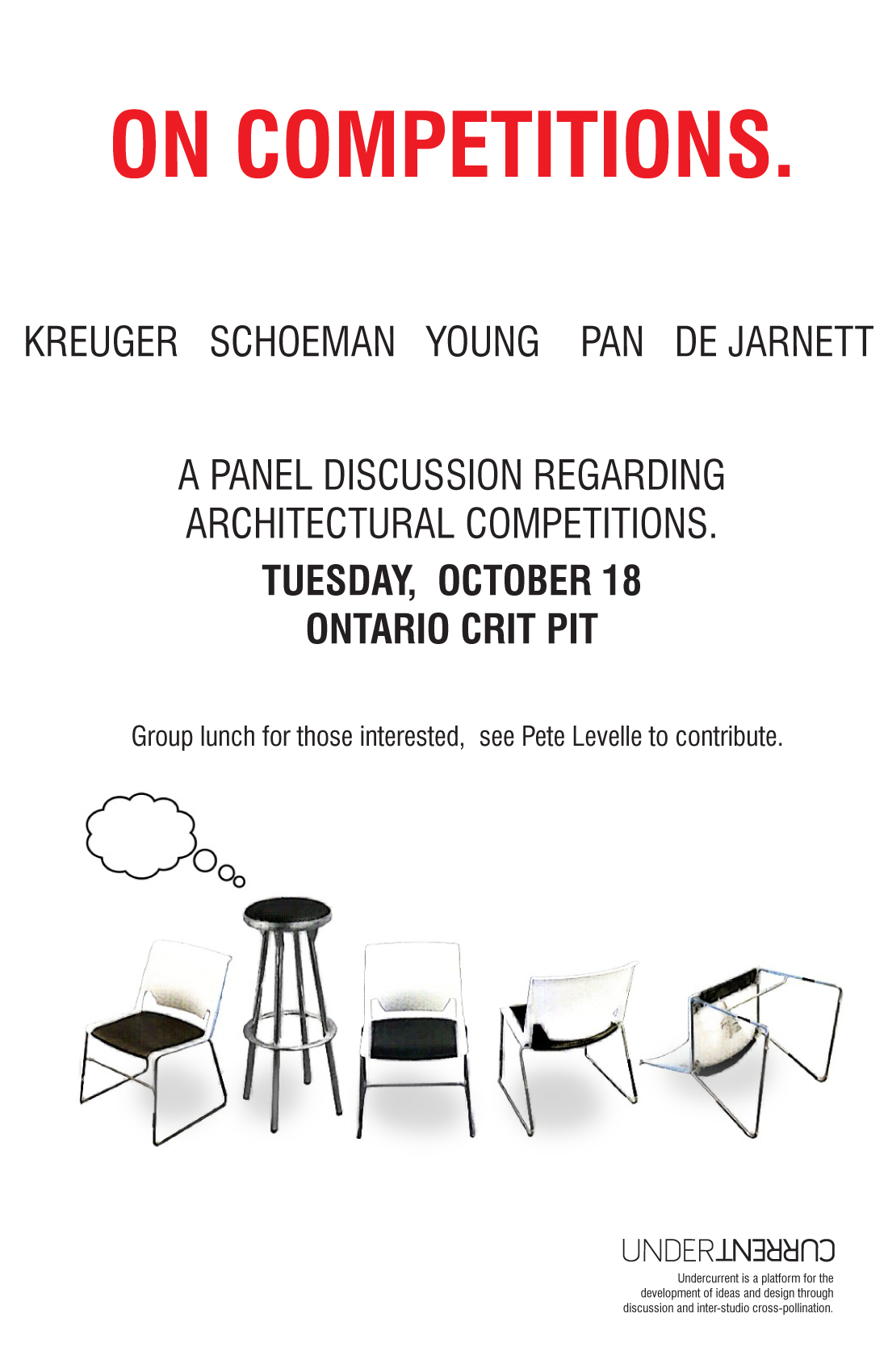By Peter Levelle
Undercurrent met last week for the first of a six-week Fall session, which is focused on exploring the culture of architectural competitions and how they affect us as a profession. We kicked off the session in the Ontario studio with a panel discussion, and designers from our Irvine, San Diego, and San Jose studios joined us via video conference. Our panelists included Mark Schoeman, Raymond Pan, and Robert Young from Ontario, Mitchell de Jarnett from Irvine, and James Krueger from San Diego.

Meeting of the Minds
Architectural competitions have very much become a common practice in the profession, especially in the current economic climate. More and more firms are competing in open competitions as a means to win commissions and gain notoriety, yet the stipend awarded (for those lucky enough to be shortlisted) rarely covers the hours necessary to develop a winning design.
The discussion was interesting, and highlighted some current issues stemming from the culture of competitions. As architecture is a mentor-based profession, it seems important to educate young designers in the process of dialogue between the client and the designer. Participating in competitions typically eliminates that step. As our profession engages in more competitions, are we fostering a new generation of designers unable to dialogue with the client and provide unique and insightful design solutions?

Competitions allow the client to skip the whole dialogue process and view architecture as a finished product. The ability to ‘window shop’ ideas is counterculture to the process of architecture. Does the client truly benefit, or are they left with a visually stunning piece that is under-developed and really doesn’t address the deeper contextual issues? Do we benefit from the exposure, or have our skills in problem solving and development of ideas been marginalized to style and aesthetics?
The flipside of that argument seems to be that while architectural schools don’t typically deal with the deeper constructability issues and professional projects can often be budget-driven, competitions allow a middle ground for the development of realizable ideas. Without competitions, we may never have seen works such as the Pompidou Center by Richard Rogers and Renzo Piano, La Parc de la Villete by Bernard Tschumi, or the Yokohama Port Terminal by FOA.
[nggallery id=93]
One stunning suggestion was the need for architectural firms to mitigate the process of designs. This would help level the playing field, and as third-party liaisons we would be able to make sure that the architects involved were getting all the relevant information. We would be able to address constructability and design issues, and verify cost analysis and feasibility of submittals where clients may not have the education or experience necessary to do so.
So how has this affected the profession as whole? Should firms take on competitions as a means of branding, advertising, or gaining commissions? With the risks involved, is it wise to limit ourselves to the number of competitions we do or is it wise to take on more, simply for the fact that we have a better chance at winning future competitions as our presence becomes better known? Competitions offer architects opportunities to expand our design abilities, but there are significant risks involved. More to come as Undercurrent continues to explore the culture of design competitions during the Fall sessions.
